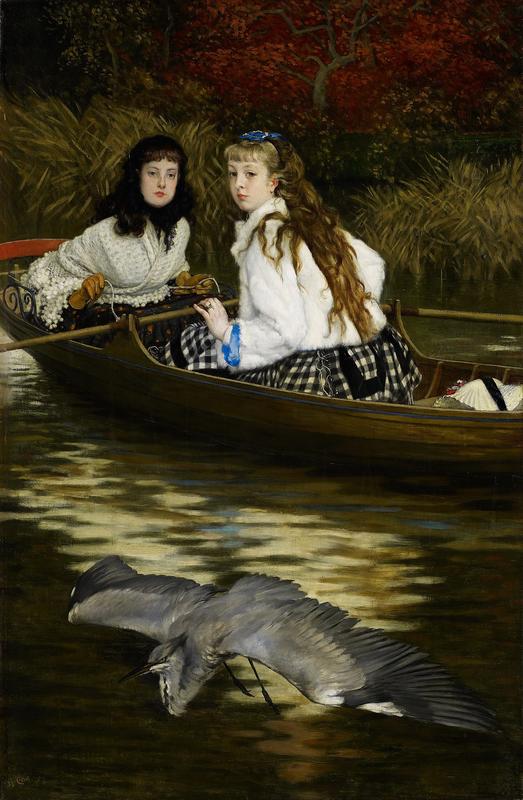More about On the Thames, A Heron
- All
- Info
- Video

Contributor
James Tissot is a rare breed. A truly migratory artist who, while not belonging to the cities that were his source material, was still able to capture them perfectly.
Born Jacques Joseph Tissot, James Tissot was a successful painter in Paris before the Franco-Prussian war. Fleeing the repercussions of the war, he traveled across the channel in 1871, but in his new home he found some initial difficulty selling his talents to the British. However On the Thames, A Heron would mark a turning point. Prior to this, Tissot spent most of his time painting historical narratives, but at the time the British had more sentimental tastes. So Tissot would start painting pictures like these, snapshots of British modernity, mostly featuring women.
A socialite himself, Tissot quickly integrated into British art circles. However, he did very little to blend in. At the time, Impressionism was in style, and while he was friends with a few famous impressionists, including James McNeill Whistler and Edgar Degas, he never really became one, his work staying fairly rooted in the realistic. In fact, he wouldn’t even marry himself to the style that helped him acquire his fame. In 1882, after the death of his beloved muse, Kathleen Newton, Tissot would experience a religious revival and the focus of his work would shift from British ladies to religious scenes. Subsequently, he would abandon the country where he had found his success and travel about the middle east, the location acting as a perpetual character study for his work.
It is interesting, then, that the heron is Tissot’s subject of choice for this picture. Here, on the Thames, it is framed as a very British bird, but this is not an entirely honest portrayal. It is correct that the Grey Heron has a home in England, however the bird is migratory and can be comfortable nearly anywhere in the world. Considering how well traveled James was, and how much he cared about accuracy, it is likely that he knew this. Perhaps he could sympathize with the bird. The heron may also be reflective of Japonisme, the craze for Japanese goods that was gripping Western Europe at the time, entrancing artists like Van Gogh and Rossetti. Tissot was a lover of "exotic" decorative arts, and he cheerfully welcomed elements of Japanese design into his own artistic vocabulary. The somewhat flattened composition of this painting further indicates the influence of Japanese prints on his style.
Sources
- Web Contributor “The Grey Heron” Animalia 2018 http://animalia.bio/grey-heron
- Web Contributor “James Tissot: Fashion & Faith” Legion of Honor Museum veiwed on 11/03/2019 https://legionofhonor.famsf.org/exhibitions/james-tissot-fashion-faith
- Web Contributor “James Tissot: Fashion & Faith” Legion of Honor Museum veiwed on 11/03/2019 https://legionofhonor.famsf.org/exhibitions/james-tissot-fashion-faith
- Marshal, Nancy Rose & Warner Malcom “James Tissot: Victorian Life, Modern Love” Yale University Press 1999 https://books.google.com/books?hl=en&lr=&id=JPCP7Iz4d28C&oi=fnd&pg=PA7&…













I like this painting because it portrays a sense of tranquility, as the girls look out over the unmoving water, it is almost as if you can see the herons wings gracefully gliding over the water.